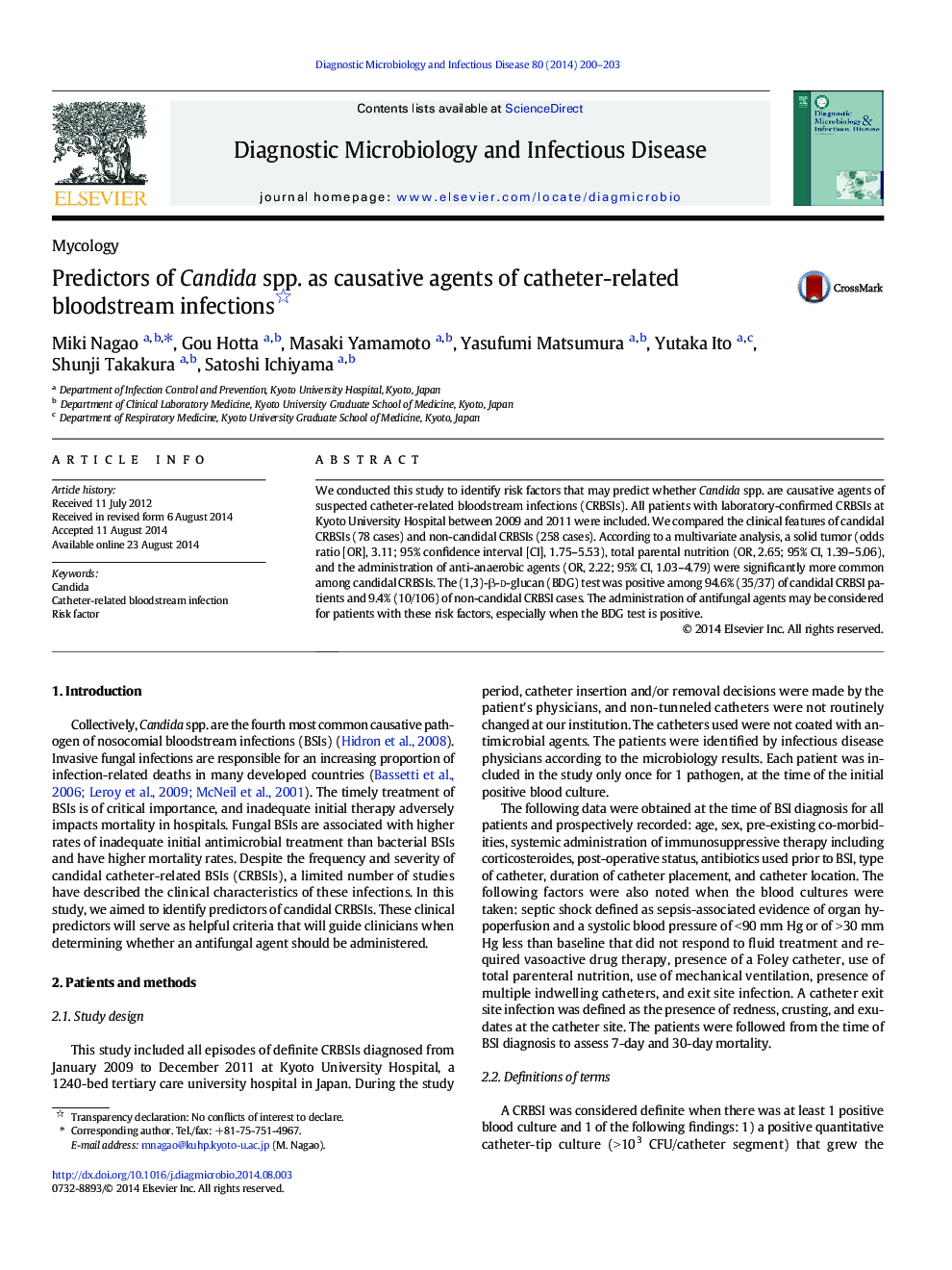| Article ID | Journal | Published Year | Pages | File Type |
|---|---|---|---|---|
| 3346973 | Diagnostic Microbiology and Infectious Disease | 2014 | 4 Pages |
•We identified risk factors that may predict whether Candida spp. are causative agents of suspected catheter-related bloodstream infections (CRBSIs).•According to a multivariate analysis, a solid tumor, total parental nutrition, and the anti-anaerobic agents were significantly more common among candidal CRBSIs.•The 1-3 β-D-glucan test was positive among 94.6 % of candidal CRBSI patients and 9.4 % of non-candidal CRBSI cases.•The administration of antifungal agents may be considered for patients with these risk factors, especially when the 1-3 β-D-glucan test is positive.
We conducted this study to identify risk factors that may predict whether Candida spp. are causative agents of suspected catheter-related bloodstream infections (CRBSIs). All patients with laboratory-confirmed CRBSIs at Kyoto University Hospital between 2009 and 2011 were included. We compared the clinical features of candidal CRBSIs (78 cases) and non-candidal CRBSIs (258 cases). According to a multivariate analysis, a solid tumor (odds ratio [OR], 3.11; 95% confidence interval [CI], 1.75–5.53), total parental nutrition (OR, 2.65; 95% CI, 1.39–5.06), and the administration of anti-anaerobic agents (OR, 2.22; 95% CI, 1.03–4.79) were significantly more common among candidal CRBSIs. The (1,3)-β-d-glucan (BDG) test was positive among 94.6% (35/37) of candidal CRBSI patients and 9.4% (10/106) of non-candidal CRBSI cases. The administration of antifungal agents may be considered for patients with these risk factors, especially when the BDG test is positive.
